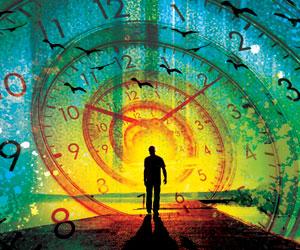Home / News / India News / Article /
Paromita Vohra: Time travels and speculative non-fictions
Updated On: 01 April, 2018 06:51 AM IST | Mumbai | Paromita Vohra
Last week I re-watched a classic Canadian documentary from 1957, called City of Gold, currently featured on one of my favourite websites, Aeon


Illustration/Ravi Jadhav
 Last week I re-watched a classic Canadian documentary from 1957, called City of Gold, currently featured on one of my favourite websites, Aeon. Directed by Wolf Koenig and Colin Low, the film is about a town called Dawson which came into being during the Klondike gold rush of the 1890s and is narrated by a former resident, historian Pierre Berton. The film pioneered the use of still photography in documentary and juxtaposes dramatic, panoramic photos of the gold rush with contemporary footage of Dawson as a considerably more placid small town in the 1950s.
Last week I re-watched a classic Canadian documentary from 1957, called City of Gold, currently featured on one of my favourite websites, Aeon. Directed by Wolf Koenig and Colin Low, the film is about a town called Dawson which came into being during the Klondike gold rush of the 1890s and is narrated by a former resident, historian Pierre Berton. The film pioneered the use of still photography in documentary and juxtaposes dramatic, panoramic photos of the gold rush with contemporary footage of Dawson as a considerably more placid small town in the 1950s.




